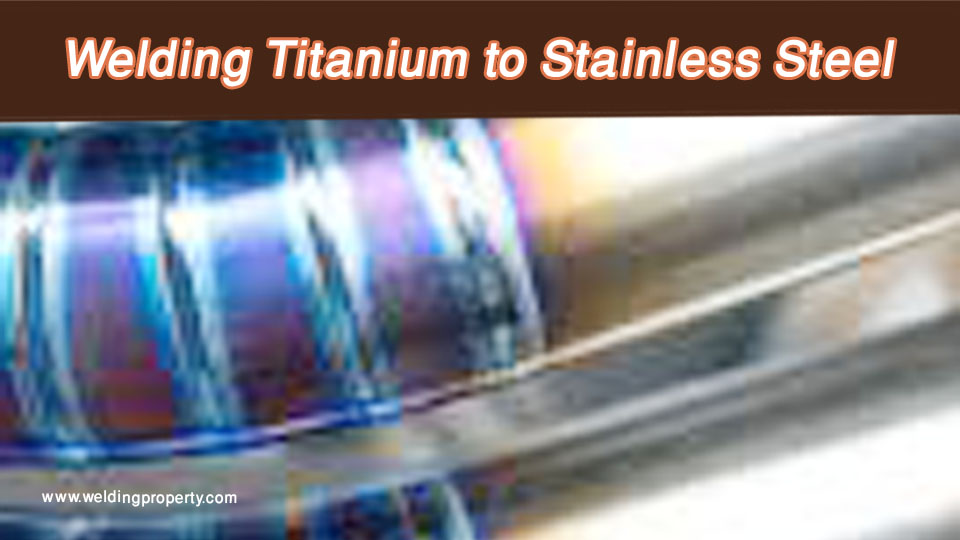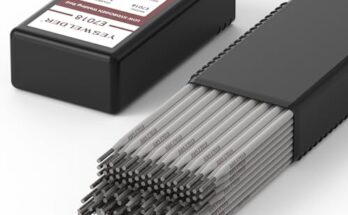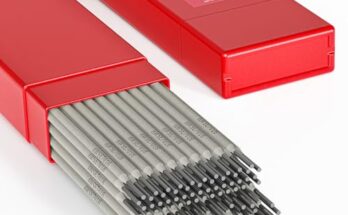Welding titanium to stainless steel is one of the most complex tasks in the metalworking world. These two materials have completely different properties, which makes their fusion challenging. But when done correctly, this type of weld can open doors to advanced engineering applications in aerospace, medical equipment, and high-performance industries.

Image by onlinemetals
I’ve explored this topic deeply and learned that the key to success lies in understanding the metallurgical differences, using the right welding techniques, and preventing brittle intermetallic compounds. If you’re planning to weld titanium to stainless steel or just curious about how it works, I’ll guide you through the process, step by step.
Why Welding Titanium to Stainless Steel Is Difficult
At first glance, titanium and stainless steel might seem like they should weld together easily. But in reality, these metals have vastly different physical and chemical properties, making their direct fusion a major challenge.
Different Melting Points
Titanium melts at around 3,034°F (1,668°C), while stainless steel melts at 2,500°F (1,370°C). This difference makes it tricky to apply heat evenly without causing issues like distortion or contamination.
Formation of Brittle Intermetallic Compounds
When titanium and stainless steel mix at high temperatures, they create brittle intermetallic phases. These compounds, such as FeTi and Fe2Ti, weaken the joint and make it prone to cracking.
Oxygen and Contamination Issues
Titanium is highly reactive with oxygen, nitrogen, and carbon at high temperatures. If not properly shielded, it can become brittle and lose its corrosion resistance. Stainless steel, on the other hand, contains iron and carbon, which can introduce unwanted elements into the weld.
Thermal Expansion Differences
Stainless steel expands and contracts more than titanium when heated and cooled. This mismatch can lead to internal stress, causing cracks in the weld.
Best Methods for Welding Titanium to Stainless Steel
To successfully join titanium and stainless steel, we need to use specialized techniques that either minimize direct fusion or use intermediate materials to help create a strong bond.
Explosion Welding
Explosion welding is one of the most effective ways to join titanium and stainless steel. It uses a high-energy explosion to force the two metals together at extreme speeds, creating a strong metallurgical bond without melting the materials.
Advantages of Explosion Welding
- No heat-related contamination
- Avoids brittle intermetallic compounds
- Produces a strong, durable bond
This method is commonly used for manufacturing titanium-clad stainless steel plates in aerospace and marine applications.
Brazing
Brazing is a lower-temperature joining process that uses a filler material to bond titanium and stainless steel without melting them. The filler metal, often silver or nickel-based, acts as a bridge between the two materials.
Advantages of Brazing
- Prevents intermetallic formation
- Reduces thermal stress
- Works well for thin materials
However, brazed joints are not as strong as welded joints and may not be suitable for high-stress applications.
Friction Welding
Friction welding uses rotational force and pressure to generate heat at the interface of the two metals, bonding them together without melting. This method is commonly used for welding titanium to stainless steel in aerospace and automotive industries.
Advantages of Friction Welding
- No filler metal required
- Avoids oxidation issues
- Produces a strong, high-quality joint
The downside is that it requires specialized equipment and is mainly used for cylindrical parts like rods and tubes.
Electron Beam Welding (EBW)
Electron beam welding is a high-energy process that uses a focused beam of electrons to create deep, narrow welds in a vacuum. This method helps prevent contamination and controls the interaction between titanium and stainless steel.
Advantages of Electron Beam Welding
- Precise and controlled welding
- Reduced risk of oxidation
- Suitable for high-precision applications
However, EBW requires expensive vacuum chambers and is mainly used in specialized industries like aerospace and medical manufacturing.
Using an Intermediate Layer
One of the most effective ways to weld titanium to stainless steel is by using an intermediate layer of a more compatible material, such as nickel or copper. This acts as a buffer, preventing the formation of brittle compounds.
Common Intermediate Layers
| Intermediate Metal | Why It Works |
|---|---|
| Nickel | Compatible with both titanium and stainless steel |
| Copper | Provides a good transition between metals |
| Silver | Used in brazing for a strong, ductile bond |
This technique is often used in industries that require high-strength joints without compromising material integrity.
Best Practices for Welding Titanium to Stainless Steel
If you’re attempting to weld titanium to stainless steel, follow these best practices to ensure a successful joint:
Use Proper Shielding
Titanium is extremely sensitive to oxygen, nitrogen, and carbon. Use argon or helium gas to create a protective atmosphere around the weld.
Clean the Materials Thoroughly
Contamination is one of the biggest issues in titanium welding. Before welding, clean both titanium and stainless steel with acetone or alcohol to remove grease, dirt, and oxidation.
Control Heat Input
Minimize heat exposure to prevent intermetallic formation. If using arc welding, keep the heat low and apply it in short bursts.
Choose the Right Filler Metal
If fusion welding is necessary, use a filler metal like nickel or copper to reduce brittleness and improve bond strength.
Post-Weld Treatment
After welding, inspect the joint for cracks and apply any necessary heat treatments to relieve stress and improve durability.
Applications of Titanium-Stainless Steel Welding
When done correctly, welding titanium to stainless steel can be incredibly useful in various industries:
- Aerospace – Used in jet engines, exhaust systems, and structural components
- Medical Industry – Applied in surgical instruments and implants
- Nuclear Industry – Used in corrosion-resistant piping and heat exchangers
- Automotive – Found in high-performance exhaust systems and lightweight components
Conclusion
Welding titanium to stainless steel is no easy task, but with the right techniques and precautions, it’s absolutely possible. Since these metals have different melting points and reactivity, direct fusion welding isn’t always the best option. Instead, methods like explosion welding, friction welding, electron beam welding, and brazing offer more reliable results.
The key to success is preventing brittle intermetallic compounds, ensuring a clean environment, and using proper shielding gases. By following best practices and selecting the right method for your application, you can achieve a strong, durable bond between these two unique metals.
If you’re taking on this challenge, be patient and experiment with different approaches. And if you’re working in an industry that requires precision, consider advanced techniques like explosion welding or using intermediate layers.
Frequently Asked Questions
What is the best way to weld titanium to stainless steel?
Explosion welding is the most effective method because it prevents brittle intermetallic compounds. Friction welding and electron beam welding are also good options for high-strength joints.
Can you use TIG welding to join titanium and stainless steel?
TIG welding is not ideal for this combination because it can lead to brittle intermetallic phases. However, it may work if an intermediate layer like nickel is used.
Why is titanium difficult to weld?
Titanium is highly reactive with oxygen, nitrogen, and carbon at high temperatures. Without proper shielding, it becomes brittle and loses its strength.
Is it possible to braze titanium to stainless steel?
Yes, brazing is a viable option, especially when using silver or nickel-based filler metals. It helps avoid direct fusion and reduces the risk of brittle compounds forming.
Where is titanium-stainless steel welding used?
This type of welding is commonly found in aerospace, medical, nuclear, and high-performance automotive applications where both lightweight and corrosion resistance are needed.


